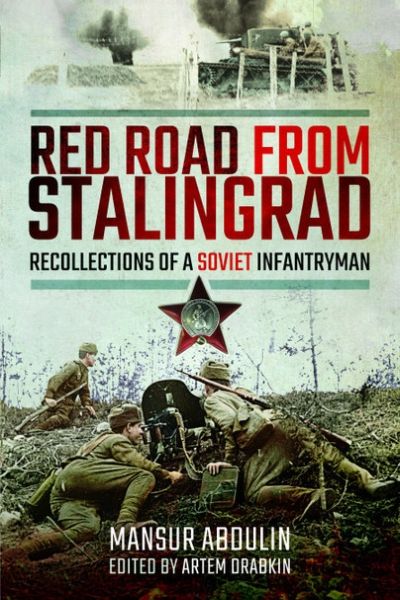| Title: | Red Road from Stalingrad - Recollections of a Soviet Infantryman |
| Writer: | Abdulin, M. |
| Published: | Pen & Sword |
| Published in: | 2019 |
| Pages: | 195 |
| ISBN: | 9781526760708 |
| Description: | Already while reading this book I was looking forward to the review I would write about this. The primary reason for this is that the book by Mansur Abdulin is unique because of its plain-spoken way of writing and the many anecdotes he shares. Mansur Abdulin was a remarkable person, because he was not only a member of the communist party in the Soviet Union, but also a Muslim. He joins the army voluntarily, despite the exemption he would get as a mineworker, and takes part in the encircling of German troops in Stalingrad in 1942. The battle continues and Mansur fights among others at Kursk, until in the autumn of 1943 he gets hurt in his leg. Consequently, he cannot serve at the front anymore and returns to the mines where he worked before. The book contains many anecdotes and personal stories. It for example tells about soldiers who died, but also about ambitions shared by people, life lessons they passed on, and about events after the war. At first Mansur Abdulin hoped someone else would write about his experiences or about a certain battle he and other soldiers witnessed, but that did not happen. A man who Abdulin meets , tells him that after the war he wants to write a book about his experiences, but he dies not long after. Another could also have served as a writer of history of the unit, but this person too dies prematurely. Eventually Mansur Abdulin thus decides to write about his experiences himself. He has had a lot of contact with fellow veterans for that, to get out as many mistakes as possible. The book is unreserved about the cruelties they experienced and the discomforts that occurred at the front. Hunger, lice and the murdering of prisoners are some examples. Mansur Abdulin also confesses how, as a result of his actions, at a certain moment two hundred injured German soldiers were shot dead. On another occasion the local population of a village takes revenge on imprisoned German soldiers without the Soviet soldiers intervening. Furthermore, there were revenge actions from the Germans against the locals or imprisoned soldiers. Additionally, the author confesses he wanted to visit families of deceased soldiers but did not do it in the end as he found it too painful or uncomfortable. An aspect mentioned less often in other autobiographies is the diversity of the Red Army. Here it is discussed however. The author describes how men from different Soviet republics fought in the same unit. Since Mansur Abdulin spoke several languages, he had the advantage of being able to communicate with many people. The Soviet soldiers are having religious or scientific discussions between themselves. The unit is being decimated and brought back to strength multiple times. The last two chapters give more background with the book . One is about the unit of which Abdulin was part and the other about the battles in which Abdulin was involved. The autobiography of Mansur Abdulin provides an intimate image of his experiences during the Second World War. Flawed leadership, failure of soldiers to act appropriately (such as friendly fire) and mistreatment all pass by. For those who want to get an intriguing image of the brutal battle at the Eastern Front, this book is undoubtedly recommended. |
| Rating: |      Excellent Excellent |
Information
- Translated by:
- Thijs de Veen
- Article by:
- Samuel de Korte
- Published on:
- 01-11-2020
- Feedback?
- Send it!




